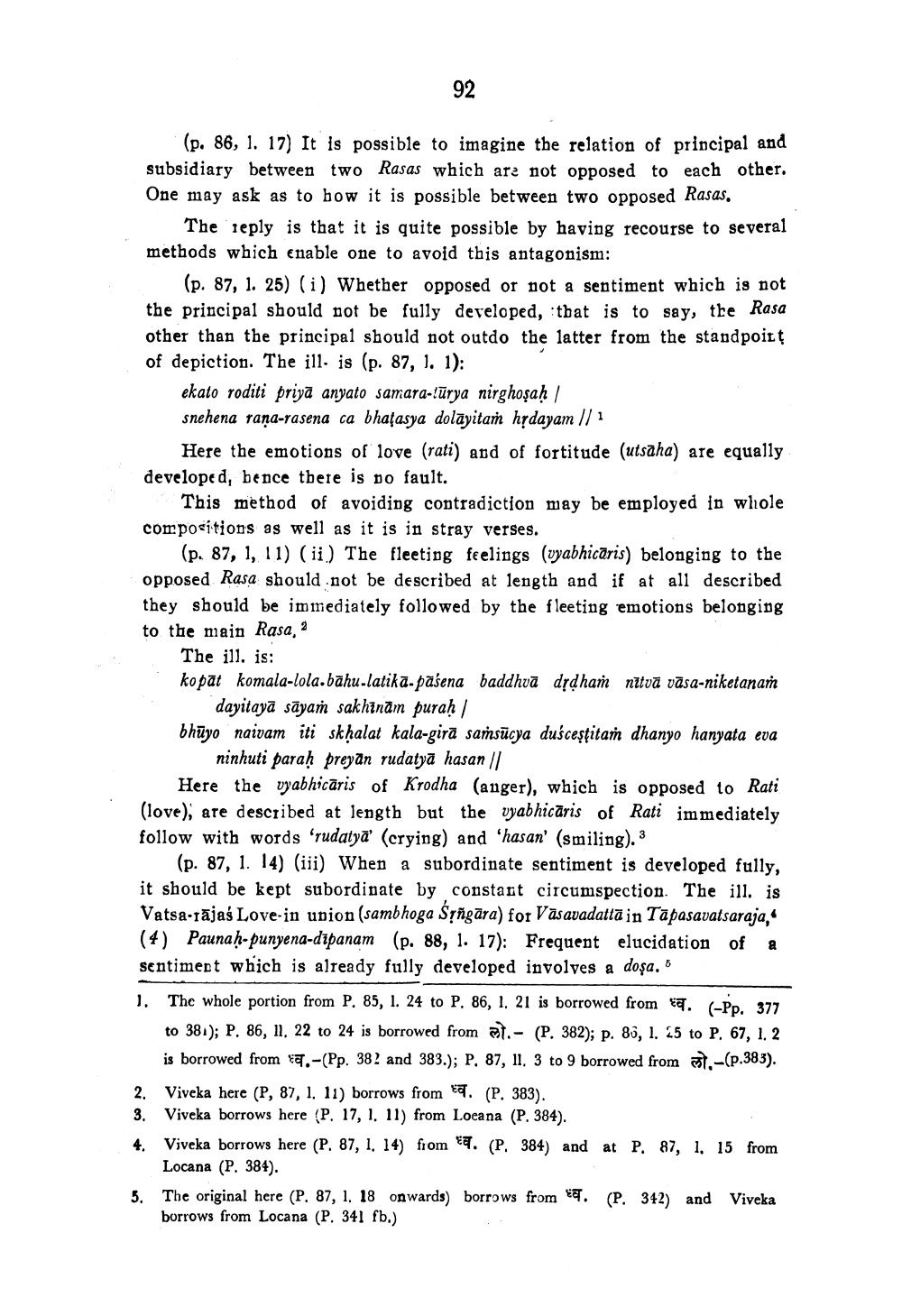________________ 92 (p. 86, 1. 17) It is possible to imagine the relation of principal and subsidiary between two Rasas which are not opposed to each other. One may ask as to how it is possible between two opposed Rasas. The reply is that it is quite possible by having recourse to several methods which enable one to avoid this antagonism: (p. 87, 1. 25) (i) Whether opposed or not a sentiment which is not the principal should not be fully developed, that is to say, the Rasa other than the principal should not outdo the latter from the standpoitt of depiction. The ill. is (p. 87, 1, 1); ekato roditi priya anyato samara-!urya nirghosah / snehena rana-rasena ca bhatasya dolayitam htdayam // 1 Here the emotions of love (rati) and of fortitude (utsaha) are equally developed, bence there is po fault. This method of avoiding contradiction may be employed in whole compositions as well as it is in stray verses. (p. 87, 1, 11) (ii) The fleetipg feelings (vyabhicaris) belonging to the opposed Rasa should not be described at length and if at all described they should be immediately followed by the fleeting emotions belonging to the main Rasa, 2 The ill. is: kopat komala-lola.bahu-latika-pasena baddhva drdham nitva vasa-niketanan dayitaya sayam sakhinam purah / bhuyo naivam iti skhalat kala-gira samsucya duscestitam dhanyo hanyata eva ninhuti parah pregan rudatya hasan || Here the vyabhicaris of Krodha (anger), which is opposed to Rati (love), are described at length but the vyabhicaris of Rati immediately follow with words 'rudatya (crying) and 'hasan' (smiling). 3 (p. 87, 1. 14) (iii) When a subordinate sentiment is developed fully, it should be kept subordinate by constant circumspection. The ill. is Vatsa-tajas Love-in union (sambhoga Stngara) for Vasavadatta in Tapasavatsaraja. (4) Paunah-punyena-dipanam (p. 88, 1. 17): Frequent elucidation of a sentiment which is already fully developed involves a dosa. 5 1. The whole portion from P. 85, I. 24 to P. 86, 1. 21 is borrowed from tq. (-Pp. 377 to 381); P. 86, 11. 22 to 24 is borrowed from 31.- (P. 382); p. 80, 1, 25 to P. 67, 1.2 is borrowed from $7.-(Pp. 382 and 383.); P. 87, 11. 3 to 9 borrowed from 1.-(p.383). 2. Viveka here (P, 87, 1, 11) borrows from ea. (P. 383). 3. Viveka borrows here (P. 17, 1. 11) from Loeana (P. 384). 4. Viveka borrows here (P. 87, 1. 14) from 8. (P. 384) and at P. 87, 1, 15 from Locana (P. 384). The original here (P. 87, 1. 18 onwards) borrows from ea. (P. 342) and Viveka borrows from Locana (P. 341 fb.)




